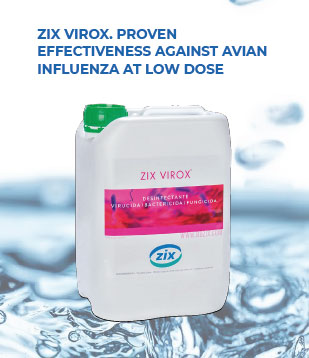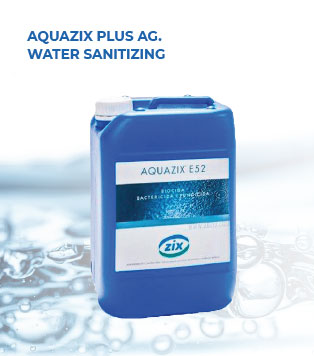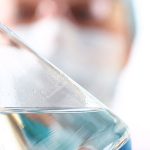In the last months of 2020 and early 2021, outbreaks of Avian Flu in Europe have increased and have been repeated in birds almost all over the planet. As cases multiply, concern grows about the serious economic and health repercussions this has. Besides, we must bear in mind that many of the outbreaks are detected in free-range birds, which are considered the great foci of the different strains of the virus that cause the disease, and this wildlife is difficult to control
Therefore, biosecurity is the cornerstone to reduce the probability of the virus spreading in the environment. We must implement a biosecurity plan where all measures are rigorously followed so as not to compromise the safety of our farm and thus minimize global risks.
We must remember that Avian Influenza is a notifiable disease, therefore, we must always inform the authorities of possible outbreaks of the disease
At the disease level, we differentiate 2 main types of Avian Influenza according to their severity:
1. The highly pathogenic, which will be the most severe and normally fatal for our birds. In addition, its H5N1 strain can infect humans (it is zoonotic)
We can recognize it by its symptoms such as:
-
Generalized inflammation of the heads and crests due to edema.
-
Blue coloration in neck and throat.
-
Loss of appetite.
-
Shortness of breath, half-open beaks, coughing, sneezing, rales …
-
Diarrhea.
-
Drop in laying.
-
Mortality close to 100% quickly
2.Low pathogenic Avian Influenza, which will not produce any symptoms in birds or very mild at the respiratory level and drop in production.
As a respiratory virus, the virus will have a high rate of contagion, which is also going to be favored by the global world in which we find ourselves (movement of goods and products and animals).
Also, we must bear in mind that migratory birds play an important role in the transmission of the disease, in many cases, they do not develop the disease, but they will be able to spread it.
To avoid the high transmissibility of the virus, we must be very rigorous when establishing and complying with a good biosecurity plan that directly protects our animals, which indirectly will protect the general population (the more we limit the transmissibility of the virus the less likely it is to mutate and spread).

BIOSECURITY MEASURES
These measures must be focused on preventing the entry of the virus into our farm and, if the virus enters the facilities, limit its spread within the facilities or outside the facilities.
– Perimeter fencing and good general condition of our facilities
A good perimeter fence and the correct state of our facilities will prevent the access of animals from outside our facility or the exit of animals from it. In the same way, the state of the feed stores or water tanks must be correct, preventing the access of animals or external elements to them.
– External elements that enter our (raw materials, equipment, etc.)
Countless elements enter our facilities daily. Every day we give access to our facilities to raw materials from our suppliers, for this reason, we must keep a scrupulous control and disinfection of all the elements that enter, ensuring that all these elements have been disinfected in such a way that they do not pose a risk.
– Vehicles
In the same way that we establish controls for the supplies/animals that enter our facilities, we must implement disinfection measures for the vehicles in charge of delivering them. Both the vehicles that access our facilities and the people who drive them must be previously cleaned and disinfected, as they can act as a vector of the disease. It is extremely important to clean both the interior and exterior of the vehicle, and we must also do the same with the wheels, so appropriate disinfection mats must be placed for all types of vehicles
Internal staff and external staff
We must minimize the number of visitors who access our facilities, only the people necessary for the proper functioning of the facility should enter. These people can be internal, who work in the facilities, or outsiders who come to perform services to these are external elements that must also pass disinfection before their entry
- As key elements for its correct control, cleaning and disinfection are:
-Specific work clothing
If possible, visitors should wear clean and sanitized overalls and work boots.
-Footbaths at the entrance
Broad-spectrum disinfectant footbaths should also be placed at all entrances. These baths should be changed periodically depending on the type of disinfectant
-Frequent hand washing
All people should wash their hands at any entrance, when changing activities, before starting, after breaks, and before leaving the farm.
-Access control of external animals
In the case of fattening in our facilities, permanent controls must be established with the suppliers of the animals to eliminate possible causes of virus infections. In this case, suppliers must have their biosafety plan that will complement our plan. In this way, if all the links in the production chain have their biosecurity plan, the probability that they will be caused by cases of Avian Influenza will be very close to 0.

 CONCLUSIONS
CONCLUSIONS
Disinfection of people, elements, raw materials, animals, and facilities must be carried out with disinfectants with proven efficacy against the Influenza virus
The quality and microbiological condition of the water must be optimal. Water treatment is always essential for an optimal BIOSECURITY plan because we cannot always control the origin of our water, so a good biocidal treatment that ensures safe and pathogen-free water is key.
If we follow these measures exhaustively and without failure, we will not only be able to protect ourselves against Avian Influenza and other types of diseases, but these measures will act in a complementary way to other biosecurity measures that are being implemented in the different links of the productive chain. Also, we will be indirectly protecting society in general.

The key to success is to get the involvement of all the personnel involved in the production, we must all be aware of the importance of biosecurity to put all the necessary effort in applying the measures effectively.





